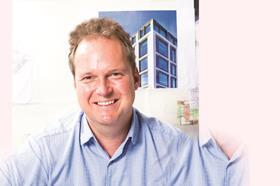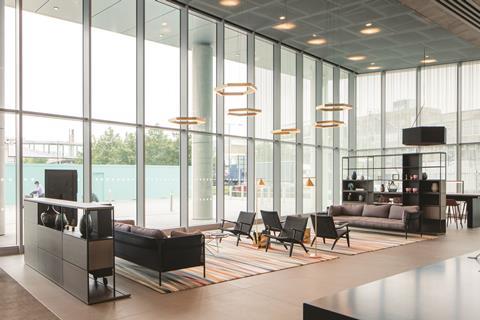Better transport connectivity, coupled with high London rents, is making more occupiers think seriously about alternatives to taking space in central London.

This has led to a heightened interest in ‘suburban capitals’ – places such as Slough, Watford, Reading and Maidenhead, which have become increasingly attractive options and are using design to shape their competitive edge.
There has often been a tacit understanding that offices on the outskirts of London do not require the same level of investment in quality as those in central London.
However, the line delineating these different geographical markets is blurring and this change is being led by improvements in infrastructure. If you take Slough as an example, the Elizabeth line will help forge very strong connections to the capital, as well as to Heathrow, giving the town access to the global business community.
The increased level of connectivity is changing the way developers and architects think. These suburban capitals are raising their game, becoming on a par with the London market.
A recent example of this is the Future Works development in Slough that Sheppard Robson designed for U+I and AshbyCapital. The project’s brief was to help support the town’s regeneration plans with workplaces that are indistinguishable from the central London market in terms of quality of finish, detailing and amenity spaces.
Find out more - The Future Works: the future work place?
The project makes a significant investment in rooftop terraces, which are key to encouraging a sense of community. This level of investment – akin to a West End office – is a clear statement of intent, debunking the preconceptions of a peripheral office market.
Urban character
Development in suburban capitals does not have to borrow all of its cues from the London market and can look to harness the benefits of designing in a location with a totally different urban character.
For example, in the case of The Future Works, the question was how we could diverge from the ‘London rules’ of design to create a highly efficient, light-filled floorplate. The building is not overshadowed as it would be in the dense urban fabric of London, so the floorplates are deeper, with 2.9m-high floor-to-ceiling space. This means that the floorplates do not have to be interrupted by atria, offering ultra-flexibility and efficiency, and spaces flooded with natural light.

We are designing a new headquarters for TJX in Watford that also illustrates a trend of increased investment in non-central locations. The company would like its new HQ campus to feel like a building made for Shoreditch, investing in design to help attract staff who might have otherwise worked more centrally.
Magnets for talent
Offices on the outskirts often have to work harder to be a magnet for talent, with a campus-like feel, where the quality of amenities – such as gyms, in-house restaurants or rooftop terraces – creates a community that fosters a powerful togetherness and a positive experience for staff.
In the future, I think we’ll see less of a binary choice between central and suburban offices, with more tenants making the most of combining the two. The explosion of co-working has made us acutely aware of flexible working over multiple sites and I think this will lead to more companies having a variety of offices in different locations.
We are already seeing businesses set up larger campus-style offices out of London, while also having less space in central London for specialist departments or for drop-in, ultra-flexible workstations.
“In the future, I think we’ll see less of a binary choice between central and suburban offices”
This promotes the idea that Slough, Watford and other suburban capitals are not merely in competition with London, but are a part of an expanding, increasingly well-connected network.
This idea of an interdependent web is reminiscent of a historic view of London that is a city formed of a series of connected villages. So, with the rise of the suburban capitals, are we seeing an extension of the dynamic that laid the original foundations of London?
Mark Kowal is a partner at Sheppard Robson





























No comments yet